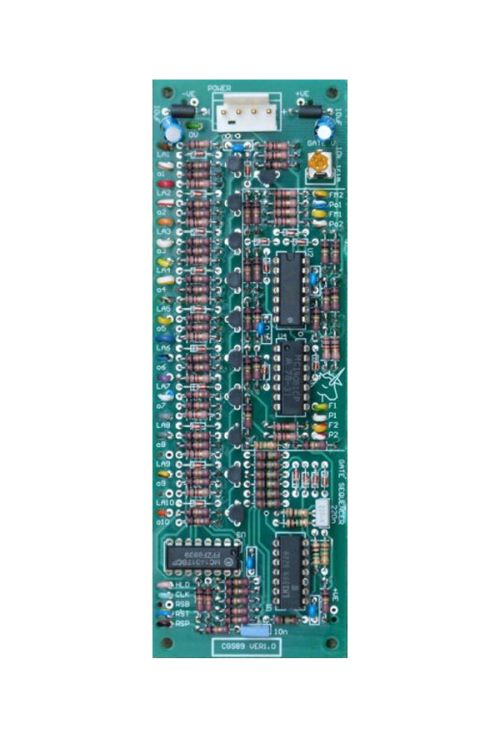CGS89 - Gate Sequencer | Cat Girl Synth
- Home
- Module Type
- CGS89 - Gate Sequencer | Cat Girl Synth
CGS89 - Gate Sequencer | Cat Girl Synth
Special Price
$12.00
Regular Price
$15.00
The CGS89 is a sequencer designed for delivering pulsed or gated events, for rhythm and percussion, triggering other sequencers, or selecting stages in Programmers such as the Serge R15 PRG
This is a PCB only suitable for multiple formats
Availability:Out of stock
BrandCat Girl Synth (CGS)
The CGS89 is a sequencer designed for delivering pulsed or gated events, for rhythm and percussion, triggering other sequencers, or selecting stages in Programmers such as the Serge R15 PRG. It can be used as a replacement for the first generation Serge R10 SEQ Sequencer.
How to use this module:
The main function of the board is as a sequential pulse generator. When clocked by an external source, each of its outputs will come on one after the other. This can be used to sequentially trigger up to ten events. An example would be to set the number of steps to 2, then connect outputs 1 and 2 to two drum sound generators. A pulse train fed to the clock input would then produce a drum roll alternating between the two drum sounds.
When coupled with a switch bank and the onboard buffers, rhythms of up to ten steps can be created. There are two onboard buffers, giving two separate channels. While these outputs can be used to trigger drum sounds, that is not their only use. They can be used to trigger envelope generators, step waves in wave tables, drive other sequencers etc. Once you have a gate sequencer in your modular, you will wonder how you ever survived without it.
Multiple gate sequencers can also cascaded for longer rhythm lengths, or more channels. To cascade the outputs of several units, simply connect the "Full Out/Mix Out" and "Pulse Out" outputs on the first unit to the corresponding outputs on the second unit and so on. That is right, this module has been designed so it's outputs can be connected together with its other outputs, or outputs of other CGS89 gate sequencers via wire ORing.
Experiment with it.
To the right: The prototype was built behind a Cynthia Gate Sequencer panel.
A little on how it works:
First we will consider the main section of the board.

The schematic of the main part of the Gate Sequencer.
An LM339 comparator is used to shape the input signals. These take whatever signal is fed into the module and convert them to signals appropriate for driving the rest of the circuitry. With the values given, the sensitivity is set at around 2V, allowing triggering from signals with a +/- 5 volt swing, or with a 0V to +10 volt swing, both of which are common in modular synths. The output waveforms of some modules will never fall below the 1.4V level, preventing triggering.
| Brand | Cat Girl Synth (CGS) |
|---|---|
| Additional Resources | BOM & More Information |



